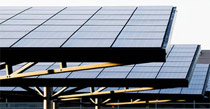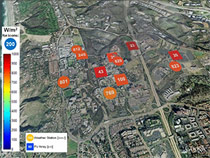UC San Diego researchers create tool to put the lid on solar power fluctuations
24 Jun 2011
How does the power output from solar panels fluctuate when the clouds roll in? And can researchers predict these fluctuations? UC San Diego Professor Jan Kleissl and Matthew Lave, a Ph.D. student in the Department of Mechanical and Aerospace Engineering at the Jacobs School, have found the answer to these questions. They also have developed a software program that allows power grid managers to easily predict fluctuations in the solar grid caused by changes in the cloud cover. The program uses a solar variability law Lave discovered.
 |
| UC San Diego researchers have developed a tool that can calculate fluctuation in the solar grid caused by changes in the cloud cover |
The finding comes at a time when the Obama administration is pushing for the creation of a smart power grid throughout the nation. The improved grid would allow for better use of renewable power sources, including wind and solar.
Also, more utilities have been increasing the amount of renewable energy sources they use to power homes and businesses. For example, Southern California Edison reported this month that it is adding more large-scale solar power plants to its grid and retooling its distribution system to accommodate the power fluctuations that will follow.
 |
| Watch an animation showing how solar power output fluctuates as the cloud cover changes on the UC San Diego |
Incidentally, Kleissl and Lave's research shows that the amount of solar variability can also be reduced by installing smaller solar panel arrays in multiple locations rather than building bigger arrays in just one spot, since a cloud covering one panel is less likely to cover the other panels, Lave said.
''The distance between arrays is key,'' he said.






























